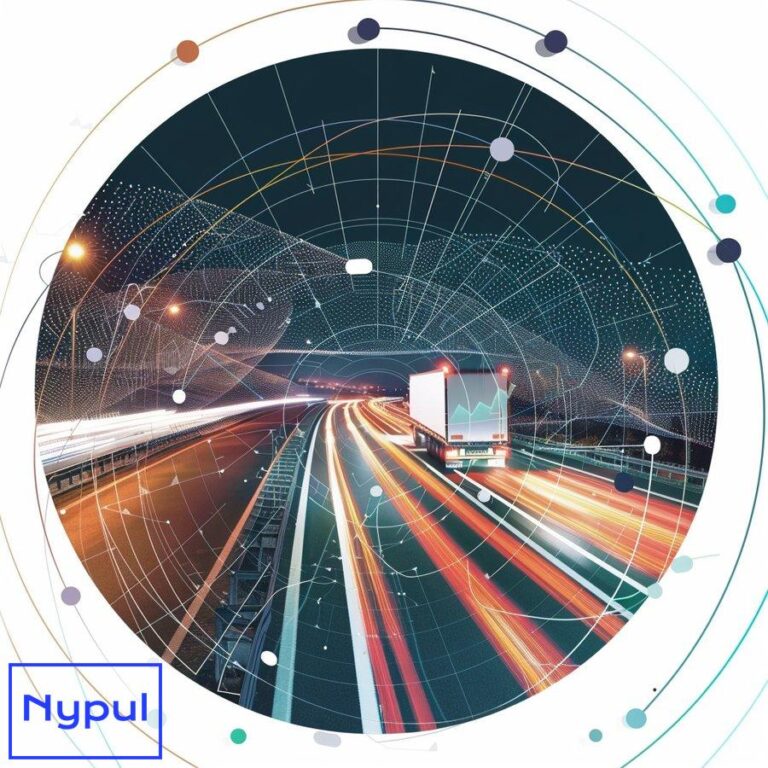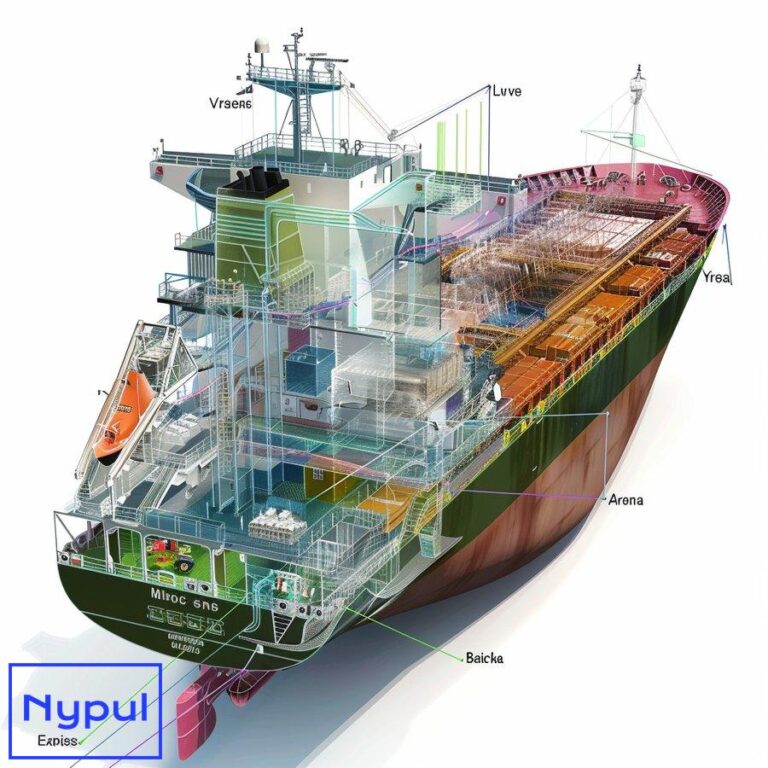What Is the Role of the Last-Mile
What is the role of the last-mile?
The last mile plays a pivotal role in modern logistics and e-commerce, representing the final leg of a product’s journey from warehouse to customer. This critical phase encompasses the transportation and delivery of goods to their ultimate destination, typically a residential address or business location. As consumer expectations for rapid and convenient delivery continue to rise, the significance of efficient last-mile operations has grown exponentially.
What is last-mile delivery and why is it crucial in logistics?
Last-mile delivery refers to the final stage of the supply chain process, where products are transported from a distribution center or transportation hub to the end consumer. This crucial step in logistics ensures that goods reach their intended recipients, completing the fulfillment cycle and directly impacting customer satisfaction.

The importance of last-mile delivery in logistics cannot be overstated. It serves as the primary touchpoint between businesses and their customers, often being the only physical interaction in an otherwise digital transaction. Efficient last-mile operations contribute significantly to overall supply chain effectiveness, customer loyalty, and a company’s competitive edge in the market.
Last-mile delivery characteristics
Complexity: Last-mile delivery involves navigating through urban congestion, rural landscapes, and varying delivery locations, making it one of the most complex and challenging aspects of logistics.
Cost intensity: This phase accounts for a substantial portion of overall shipping costs, often reaching up to 41% of the total delivery expenses.
Time sensitivity: With the growing demand for same-day and next-day deliveries, last-mile operations are under increasing pressure to meet tight deadlines and customer expectations.
Visibility: Customers now expect real-time tracking and updates on their deliveries, necessitating advanced technological solutions in last-mile logistics.
The evolution of last-mile delivery
Traditional model: Historically, last-mile delivery relied on standard shipping methods with longer delivery windows and limited tracking capabilities.
E-commerce boom: The rapid growth of online shopping has transformed last-mile delivery, pushing for faster, more flexible, and customer-centric solutions.
Technological advancements: Innovations in route optimization, GPS tracking, and mobile applications have revolutionized the efficiency and transparency of last-mile operations.
Sustainability focus: There is an increasing emphasis on environmentally friendly delivery options, including electric vehicles and bicycle couriers for urban deliveries.
The crucial nature of last-mile delivery in logistics stems from its direct impact on customer experience, operational costs, and brand reputation. As the final step in the supply chain, it holds the power to make or break the entire customer journey. Businesses that excel in last-mile delivery gain a significant competitive advantage, fostering customer loyalty and driving repeat purchases.
How does last-mile delivery impact customer satisfaction and e-commerce growth?
Last-mile delivery exerts a profound influence on customer satisfaction and plays a pivotal role in fueling e-commerce growth. The quality and efficiency of this final delivery stage can significantly shape a customer’s overall shopping experience and perception of a brand.
Customer satisfaction factors

Delivery speed: Consumers increasingly expect rapid delivery options, with 48% willing to pay more for next-day delivery. The ability to meet or exceed these expectations directly impacts customer satisfaction.
Delivery accuracy: Ensuring packages arrive at the correct location and in good condition is paramount to customer contentment.
Communication: Providing real-time updates and clear communication throughout the delivery process enhances the customer experience and builds trust.
Flexibility: Offering various delivery options, including time slots and alternative pickup locations, caters to diverse customer needs and preferences.
E-commerce growth drivers
Market expansion: Efficient last-mile delivery enables e-commerce businesses to reach a broader customer base, including those in remote or underserved areas.
Competitive advantage: Companies that excel in last-mile delivery can differentiate themselves in a crowded market, attracting and retaining more customers.
Increased sales: Positive delivery experiences encourage repeat purchases and customer loyalty, driving long-term e-commerce growth.
Brand reputation: Consistently meeting or exceeding delivery expectations enhances a brand’s reputation, leading to positive word-of-mouth and increased market share.
The impact of last-mile delivery on customer satisfaction and e-commerce growth can be illustrated through the following data:
| Factor | Impact on Customer Satisfaction | Impact on E-commerce Growth |
|---|---|---|
| Delivery Speed | 93% of customers consider shipping options important when making online purchases | 65% of retailers offering same-day delivery saw an increase in sales |
| Delivery Accuracy | 84% of consumers are unlikely to shop with a brand again after a poor delivery experience | Accurate deliveries can reduce return rates by up to 30%, improving profitability |
| Communication | 82% of customers want proactive communication about their deliveries | Transparent delivery processes can increase customer retention by up to 25% |
| Flexibility | 74% of consumers are more likely to purchase from retailers offering multiple delivery options | Offering flexible delivery options can increase conversion rates by up to 20% |
These statistics underscore the critical role that last-mile delivery plays in shaping customer satisfaction and driving e-commerce growth. By focusing on improving these aspects of their last-mile operations, businesses can create a positive feedback loop that enhances customer loyalty, increases sales, and fuels sustainable growth in the competitive e-commerce landscape.
What are the main challenges facing last-mile logistics?
Last-mile logistics presents a unique set of challenges that logistics providers and e-commerce businesses must navigate to ensure efficient and cost-effective delivery. These challenges stem from various factors, including urban congestion, customer expectations, and operational complexities.
Urban congestion and traffic
Traffic jams: Dense urban areas often experience heavy traffic, leading to delays and unpredictable delivery times.
Parking difficulties: Limited parking spaces in cities make it challenging for delivery vehicles to find suitable stopping points, causing further delays and potential legal issues.
Restricted access: Some areas may have limited access due to narrow streets, pedestrian zones, or gated communities, complicating the delivery process.
Cost efficiency
High operational costs: Last-mile delivery accounts for a significant portion of total shipping costs, often reaching up to 41% of the overall logistics expenses.
Inefficient routes: Poorly optimized delivery routes can lead to increased fuel consumption and wasted time, driving up costs.
Failed deliveries: When recipients are not available to receive packages, it results in additional delivery attempts and increased expenses.
Customer expectations
Demand for speed: Customers increasingly expect faster deliveries, with many seeking same-day or next-day options.
Delivery time windows: Providing specific delivery time slots to accommodate customer schedules adds complexity to route planning and execution.
Real-time tracking: The expectation for continuous updates on package location and estimated arrival times requires sophisticated tracking systems.
Environmental concerns
Carbon emissions: The high volume of last-mile deliveries contributes significantly to urban pollution and carbon footprints.
Sustainable packaging: Balancing the need for protective packaging with environmental considerations poses an ongoing challenge.
Alternative delivery methods: Implementing eco-friendly delivery options, such as electric vehicles or bicycle couriers, requires substantial investment and infrastructure changes.
Technological integration
Legacy systems: Many logistics providers struggle to integrate new technologies with existing infrastructure and processes.
Data management: Handling vast amounts of delivery data securely and effectively presents ongoing challenges.
Adoption of new technologies: Implementing and training staff on new technological solutions can be time-consuming and costly.
Workforce management
Driver shortages: The logistics industry often faces difficulties in recruiting and retaining qualified delivery personnel.
Training and safety: Ensuring drivers are well-trained and adhere to safety protocols is crucial but challenging in a high-pressure delivery environment.
Seasonal fluctuations: Managing workforce needs during peak seasons, such as holidays, requires careful planning and flexible staffing solutions.
To illustrate the relative impact of these challenges on last-mile logistics, consider the following table:
| Challenge | Impact Level (1-10) | Potential Cost Increase | Customer Satisfaction Impact |
|---|---|---|---|
| Urban congestion | 9 | 15-25% | High |
| Cost efficiency | 8 | 20-30% | Medium |
| Customer expectations | 9 | 10-20% | Very High |
| Environmental concerns | 7 | 5-15% | Medium |
| Technological integration | 6 | 10-20% | Low initially, High long-term |
| Workforce management | 7 | 15-25% | Medium |
This table demonstrates that urban congestion and customer expectations pose the most significant challenges in terms of impact and potential cost increases. Addressing these challenges effectively is crucial for logistics providers and e-commerce businesses to maintain competitiveness and customer satisfaction in the evolving landscape of last-mile delivery.
How can businesses optimize their last-mile delivery strategies?
Optimizing last-mile delivery strategies is essential for businesses seeking to enhance efficiency, reduce costs, and improve customer satisfaction. By implementing innovative approaches and leveraging technology, companies can significantly improve their last-mile operations.
Route optimization

Advanced algorithms: Utilize sophisticated routing software that considers factors such as traffic patterns, delivery time windows, and vehicle capacity to create the most efficient delivery routes.
Dynamic routing: Implement real-time route adjustments based on current traffic conditions, new orders, or unexpected events to maximize delivery efficiency.
Cluster planning: Group deliveries in close proximity to reduce travel time and fuel consumption.
Delivery options diversification
Click-and-collect: Offer customers the option to pick up their orders from designated collection points, reducing the burden on home deliveries.
Parcel lockers: Install secure lockers in convenient locations where customers can retrieve their packages at their convenience.
Flexible delivery windows: Provide customers with the ability to choose specific delivery time slots that suit their schedules.
Technology integration
Mobile applications: Develop user-friendly apps for both customers and delivery personnel to facilitate real-time communication and tracking.
IoT devices: Implement Internet of Things (IoT) sensors in vehicles and packages to monitor location, temperature, and handling conditions throughout the delivery process.
Artificial Intelligence (AI): Leverage AI for predictive analytics to anticipate demand, optimize inventory placement, and improve delivery accuracy.
Collaborative logistics
Crowdsourced delivery: Partner with local drivers or utilize platforms that connect businesses with available delivery personnel during peak times.
Partnerships: Collaborate with local businesses or other logistics providers to share resources and expand delivery coverage.
Urban micro-hubs: Establish small distribution centers in strategic urban locations to reduce the distance between storage points and final destinations.
Sustainable practices
Electric vehicles: Transition to electric or hybrid delivery vehicles to reduce carbon emissions and operating costs.
Bicycle and foot couriers: Utilize eco-friendly delivery methods for short-distance urban deliveries.
Optimized packaging: Implement right-sized packaging solutions to reduce waste and improve vehicle space utilization.
Customer communication
Proactive notifications: Keep customers informed about their delivery status through automated SMS, email, or app notifications.
Self-service portals: Provide customers with the ability to track, reschedule, or redirect their deliveries through online platforms.
Feedback mechanisms: Implement systems to collect and analyze customer feedback for continuous improvement of delivery services.
To illustrate the potential impact of these optimization strategies, consider the following table:
| Optimization Strategy | Potential Cost Reduction | Customer Satisfaction Improvement | Implementation Complexity |
|---|---|---|---|
| Route optimization | 10-20% | High | Medium |
| Delivery options diversification | 5-15% | Very High | Medium |
| Technology integration | 15-25% | High | High |
| Collaborative logistics | 10-20% | Medium | Medium |
| Sustainable practices | 5-10% | Medium | High |
| Customer communication | 5-10% | Very High | Low |
This table demonstrates that while some strategies, such as technology integration, may have higher implementation complexity, they also offer significant potential for cost reduction and customer satisfaction improvement. Businesses should carefully consider their specific needs and resources when selecting which optimization strategies to prioritize.
By implementing a combination of these strategies, businesses can create a more efficient, cost-effective, and customer-centric last-mile delivery operation. The key lies in continually assessing performance, gathering feedback, and adapting strategies to meet evolving market demands and customer expectations.
What technological innovations are revolutionizing last-mile operations?
Technological innovations are rapidly transforming last-mile operations, offering solutions to longstanding challenges and creating new opportunities for efficiency and customer satisfaction. These advancements are reshaping the landscape of last-mile delivery, enabling businesses to meet the growing demands of e-commerce and consumer expectations.

Autonomous vehicles and drones
Self-driving vehicles: Autonomous cars and trucks are being developed to handle deliveries without human drivers, potentially reducing labor costs and increasing delivery hours.
Delivery drones: Unmanned aerial vehicles are being tested for rapid, direct-to-consumer deliveries, particularly useful in remote or hard-to-reach areas.
Sidewalk robots: Small, autonomous robots are being deployed for short-distance deliveries in urban areas, navigating sidewalks and pedestrian zones.
Artificial Intelligence and Machine Learning
Predictive analytics: AI algorithms analyze historical data and current trends to forecast demand, optimize inventory placement, and improve route planning.
Chatbots and virtual assistants: AI-powered communication tools enhance customer service by providing real-time delivery information and handling inquiries.
Dynamic pricing: Machine learning models adjust delivery pricing based on factors such as distance, time of day, and current demand.
Internet of Things (IoT) and sensors
Smart packaging: IoT-enabled packages can transmit real-time data on location, temperature, and handling conditions throughout the delivery process.
Vehicle telematics: Sensors in delivery vehicles provide data on fuel consumption, driver behavior, and maintenance needs, improving fleet management.
Environmental monitoring: IoT devices track environmental conditions to ensure proper handling of sensitive goods during transit.
Blockchain technology
Supply chain transparency: Blockchain creates an immutable record of each step in the delivery process, enhancing traceability and accountability.
Smart contracts: Automated agreements facilitated by blockchain can streamline payment processes and enforce delivery terms.
Fraud prevention: The decentralized nature of blockchain helps reduce the risk of fraud and tampering in delivery documentation.
Augmented Reality (AR) and wearables
AR-assisted picking: Warehouse workers use AR glasses to quickly locate and retrieve items for delivery, improving efficiency and accuracy.
Wearable devices: Delivery personnel utilize smartwatches or other wearables for hands-free navigation and communication.
AR-enhanced delivery: Customers can use AR apps to visualize package placement or receive visual instructions for complex deliveries.
Advanced analytics and big data
Route optimization: Sophisticated algorithms process vast amounts of data to create the most efficient delivery routes in real-time.
Customer behavior analysis: Big data analytics help businesses understand and predict customer preferences, enabling personalized delivery options.
Performance metrics: Advanced analytics tools provide detailed insights into delivery performance, identifying areas for improvement.
To illustrate the potential impact and adoption timeline of these technological innovations, consider the following table:
| Technology | Potential Impact (1-10) | Estimated Widespread Adoption | Primary Benefits |
|---|---|---|---|
| Autonomous vehicles and drones | 9 | 5-10 years | Cost reduction, 24/7 operations |
| AI and Machine Learning | 8 | 1-3 years | Improved efficiency, personalization |
| IoT and sensors | 7 | 2-5 years | Real-time tracking, quality control |
| Blockchain | 6 | 3-7 years | Transparency, security |
| AR and wearables | 7 | 2-4 years | Operational efficiency, error reduction |
| Advanced analytics and big data | 8 | 1-2 years | Optimized decision-making, cost savings |
This table suggests that while some technologies, such as AI and advanced analytics, are already being widely adopted, others like autonomous vehicles may take longer to become mainstream in last-mile operations. However, the potential impact of these innovations is significant across the board.
The integration of these technological innovations in last-mile operations offers numerous benefits, including:
Increased efficiency: Automation and AI-driven optimization can significantly reduce delivery times and operational costs.
Enhanced customer experience: Real-time tracking, precise delivery windows, and personalized services improve customer satisfaction.
Improved sustainability: Technologies like route optimization and electric vehicles help reduce the environmental impact of last-mile deliveries.
Greater flexibility: Innovative delivery methods and AI-powered systems allow for more adaptive and responsive logistics operations.
Data-driven decision making: Advanced analytics provide valuable insights for continuous improvement and strategic planning.
As these technologies continue to evolve and mature, they will play an increasingly critical role in shaping the future of last-mile delivery. Businesses that successfully integrate these innovations into their operations will be well-positioned to meet the growing demands of e-commerce and gain a competitive edge in the rapidly changing logistics landscape.
How do companies measure and improve last-mile performance?
Measuring and improving last-mile performance is crucial for companies seeking to optimize their delivery operations, reduce costs, and enhance customer satisfaction. By implementing comprehensive metrics and continuous improvement strategies, businesses can gain valuable insights into their last-mile processes and identify areas for enhancement.
Key Performance Indicators (KPIs)
On-time delivery rate: The percentage of deliveries made within the promised time frame.
Delivery success rate: The proportion of successful deliveries compared to failed attempts or returns.
Average delivery time: The mean time taken from order placement to final delivery.
Cost per delivery: The total expenses associated with each successful delivery.
Customer satisfaction score: Feedback ratings provided by recipients after delivery.



